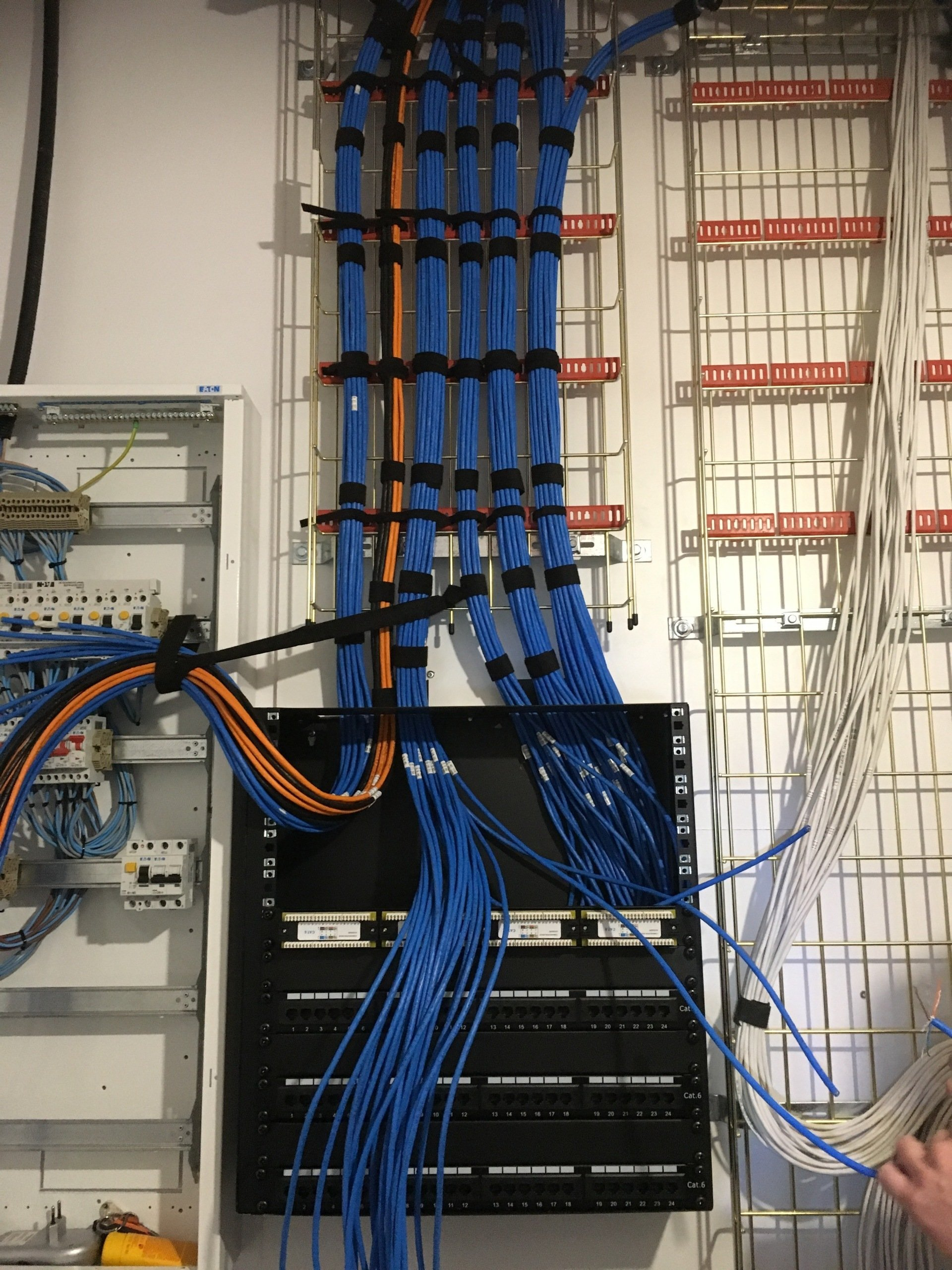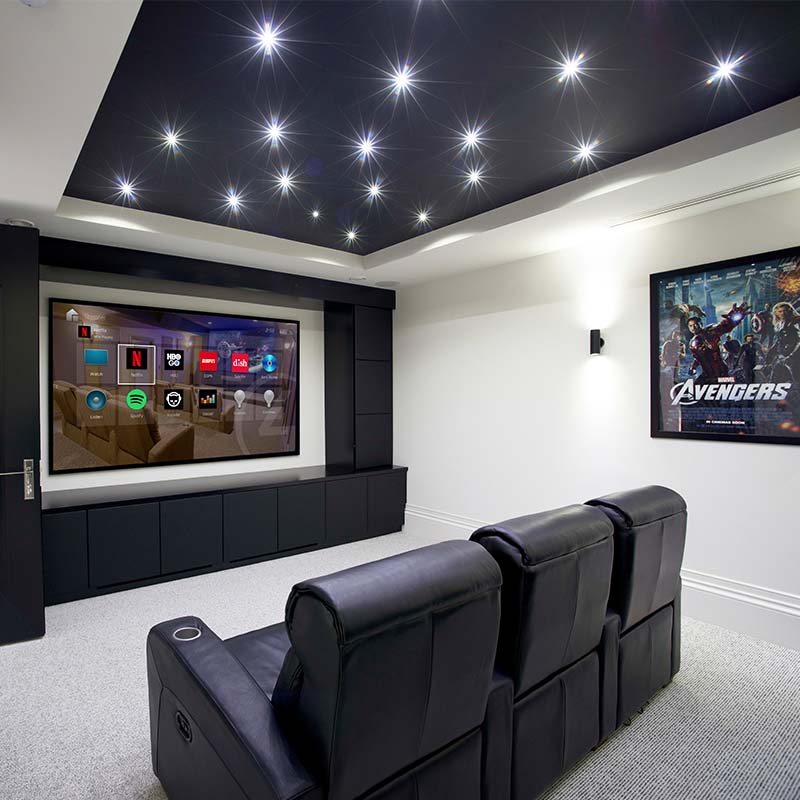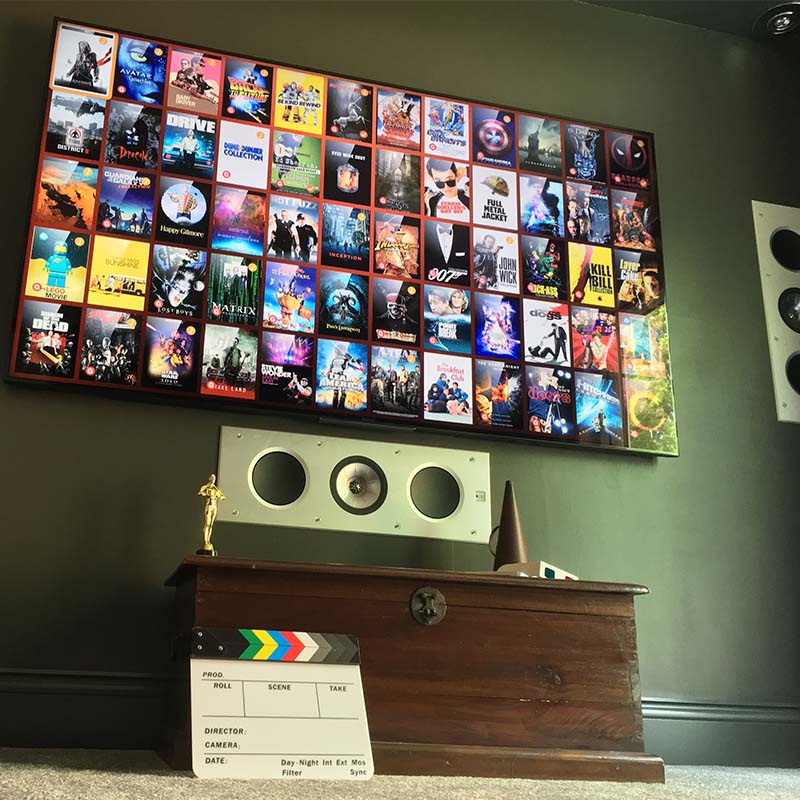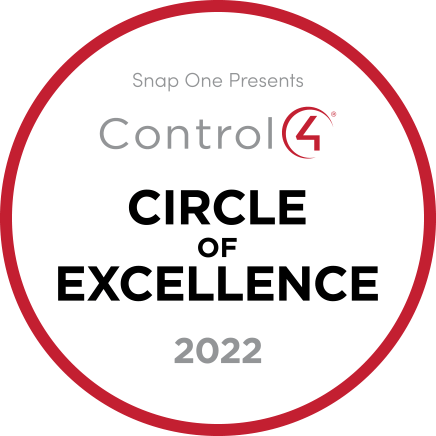Care Home Providers
Create Independent Living Smart Spaces
Challenges in the care home industry
The care home industry is subject to many competing pressures/challenges, ranging from:
- Workforce Pressures:
- Staffing shortages
- Recruitment & retention
- High turnover
- Burnout & sickness
- Financial & Funding Challenges:
- Inadequate funding
- Rising costs
- Financial viability
- Regulatory & Operational Challenges:
- Complex regulations
- Maintaining quality standards
- Meeting diverse needs of residents
Positive outcomes for care home providers
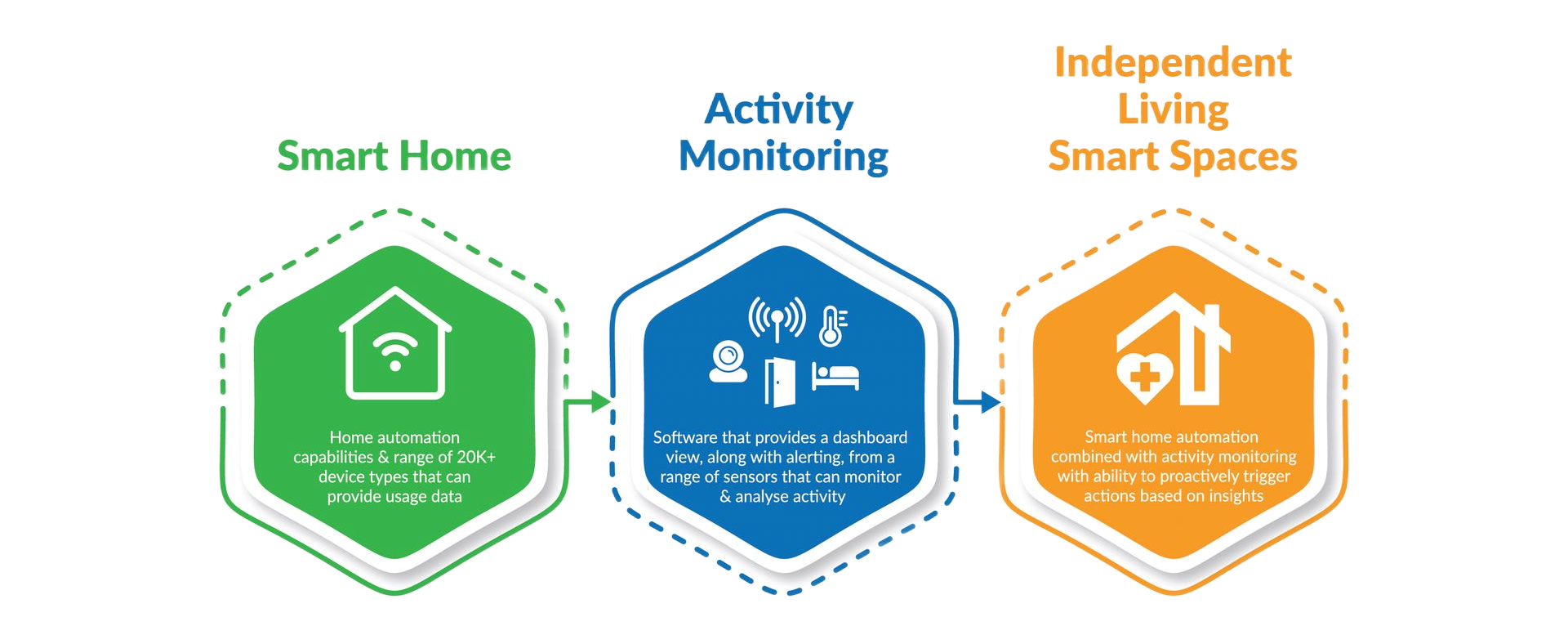
Automated Spaces unique ‘Independent Living Smart Spaces’ solution, which combines smart home technologies with an activity monitoring solution, means that we can offer care home providers the following advantages, benefits and opportunities:
Workforce Pressures:
- Do more with less; Automate manual daily tasks e.g., opening and closing blinds, turning lights on and off, opening and closing windows to aid ventilation of fresh air, turning on and off audio/video equipment in communal areas and resident’s rooms, etc.
- Attract & retain the best talent; Staff get to work with and are supported by the latest technology solutions.
- Reduce turnover; Enhance staff job satisfaction as they can spend more quality time with residents providing actual care services.
- Reduce burnout; Remove mundane and repetitive daily non-care related tasks from staff workloads.
Financial & Funding Challenges:
- Offer a premium service; Our life enhancement solutions mean you could create additional revenue into your business with an optional upgrade service offering in existing as well as new care homes.
- Control your costs; Our solutions only require a relatively small recurring revenue cost that can be accurately budgeted for several years into the future. Some of the solutions can also help you control your electrical, water and gas consumption, in your care homes, allowing you to better constrain your energy costs.
- Reduced procurement costs; Purchasing several systems, in a bundle, via a single supplier allows them to provide you with a higher level of discounts e.g., a single supplier for your intruder alarm, CCTV, roller blinds, cinema rooms, media rooms, audio and video devices, data networking, Wi-Fi equipment, independent living technologies, etc. It can also reduce the procurement contract administration costs as there are less supplier contracts to administer.
- Competitive advantage; Offer a unique selling point over your competitors to ensure maximum occupancy levels.
Regulatory & Operational Challenges:
- Improve quality standards; Our solutions can help your staff and care homes to achieve ‘Outstanding Ratings’ through the implementation of the following:
- Safer environments with active monitoring of resident’s activities with comprehensive auditing and reporting.
- Effective care, treatment and support from a modern workforce supported by appropriate latest technologies.
- Increased dignity through technologies that can empower residents in their own care e.g., see the 'Nudges' section below.
- Responsive services via technologies that can immediately alert any worrying patterns/trends in resident activities that could be an indication of a health issue allowing for early medical intervention.
- Well-led managerial decisions based on the accurate daily, weekly and monthly reporting of resident activities from the associated technologies ensuring effective governance.
- Exceptional outcomes using technologies that complement and better support the care that your staff can offer residents, see the 'Positive outcomes for care homes' section below.
- Innovative solutions that can enhance the care provided by your staff and provide residents with the latest solutions.
- Person-Centred technologies that can be easily customised for each individual resident’s needs rather than applied in an outdated ‘one size fits all’ approach.
- Support a strong culture of safety with technologies that provide reporting and audit capabilities of resident’s activities to staff and relevant 3rd parties e.g., Care Quality Commission inspectors or family members, etc.
- Solutions for diverse needs of residents; Our solutions can aid residents with a wide range of needs e.g., People with complex mobility challenges, people with dementia, people with traumatic brain injuries, people who are Blind, people who are Deaf, people with Autism, etc.
Positive outcomes for care homes
Automated Spaces offers a variety of Independent Living Technology solutions that can provide a broad range of positive outcomes for those living in a care home:
- Increased Independence
- Improved Access to Environment
- Reduced Risk of Falls
- Reduced Risk of Long Lie
- Improved Dignity
- Maintenance of Personal Health & Hygiene
- Reduced Risk of Major Flooding Damage
- Create a Sense of Time of Day/Daily Routine
- Positively Impact Focus & Cognitive Performance
- Reduced Power Consumption
- Reduced Risk of Walking with Purpose late at night
- Improved Communication with Others
- Reduced Sense of Loneliness/Social Isolation
- Reduced Anxiety/Stress
- Reduced Risk of Sensory Sensitivity Events
- Reduced Risk of Fires
Some of our Independent Living Technology solutions also can provide the following outcomes for the staff in a care home:
- Reduced Demand on their Time
- Increased Quality of Time with Family Member/Friend
- Reduced Stress/Anxiety
- Faster Response to Emergency
- Improved Communication with Service User
If you would like to know more about how we can provide these outcomes
Independent living technology solutions for your care home(s)
Automated Spaces can provide the following Independent Living Technology solutions for your care home(s):
- Voice control of your environment
- Voice activated communications
- Occupancy activated room lighting
- Internet connected doorbell
- Fall detection sensors
- Circadian rhythm lighting
- CCTV curtilage monitoring
- Motorised window blinds/curtains
- Motorised window openers
- Nudges
- Water damage prevention
- Scheduled based automations
- Door status monitoring
- Room activity monitoring
- Smart intruder alarm
- Door / window contact sensors
- Smart mains power sockets & adaptors
- Electronic shared calendar
- Visual indicators
- Halo sensor
- Sensory alarm indicators
- 3D Image Detection Sensors
See the following sections for further details about the independent living technologies for care home providers.
Note: These independent living technologies are totally modular, you can select just one or combine any number of them, to create the right solution for your care home(s).
Voice control of your environment
Voice or ‘Text to Speech’ control of specific items in a resident's room e.g., Using a voice assistant like Amazon Alexa to open/close blinds, turn on/off lights, boil kettle, turn on a fan, turn on TVs or control central heating by voice command alone.
This provides hands-free operation of the resident's environment.
Useful for those who struggle with mobility or have limited or no use of their hands or upper limbs.
Voice activated communications
Using the ‘Drop In’ function of Amazon Alexa to initiate a voice call with a relative or a member of the care homes staff in an emergency without needing to dial a number or even have a phone close to hand.
Useful for those that struggle to physically interact with a phone.
Occupancy activated room lighting
Lights in rooms automatically turn on when someone enters or leaves the room depending upon the time of day and whether the room is dark.
No more having to reach for switch lights on walls to turn lights on/off.
Lights can also be automatically switched off, after a set period, when there is no occupancy detected in the room.
Useful for those with limited or no use of their hands or upper limbs or those prone to falls. Also, useful for controlling electrical consumption by light fixtures in those infrequently used spaces in a care home.
Internet connected doorbell
Internet connected doorbell / intercom system to easily answer visitors, and remotely open a locked door, from any location in the care home without having to physically go to the front entrance door. Access can be granted to the property by staff members who aren’t even in the reception area at the time of the doorbell button press e.g., if a member of staff temporarily steps away from the reception desk, they would still be able to engage with visitors to the care home.
Useful to allow staff to be able to step away from the reception without affecting access to the care home.
Fall detection sensors
Fall detection sensors with push notification/email alerts sent to care home staff. Sensors can be ceiling mounted in resident's rooms or communal areas.
This means that residents don’t need to use a wearable fall alarm device or be able to reach a pull cord to summon assistance.
Useful for minimising the risk of a resident experiencing a long lie after a fall as an alert is send out immediately after a fall has occurred.
Circadian rhythm lighting
LED light fixtures that can have their colour temperature automatically altered, gradually throughout the day, by a Smart Home Hub. This allows the LED lights to mimic the changing colour of the sun rays outside through the daylight cycle i.e., a warm brownish/white 2700K first thing in the morning at sunrise, increasing to a brilliant white 6000K in the middle of day, then gradually cycling back to the warm brownish/white 2700K by sunset.
Mimicking the natural outdoor sunlight colour temperature, on your internal light fixtures, can have a positive impact on your circadian rhythm. A healthy circadian rhythm has been associated with an improved body clock, better sleep patterns and alertness during the day. Studies have also shown this can reduce the risk of falls in care homes.
Lights can be operated by smart light switch, mobile phone/tablet application, voice command or as part of a pre-programmed schedule or in response to external events (e.g., trigger of a presence sensor, etc.).
Useful for those that are prone to falls or suffer with sleep related issues e.g., fatigue, tiredness, lack of concentration, etc.
CCTV curtilage monitoring
Outdoor CCTV camera(s) create a virtual trip wire line across the boundary points of the care home e.g., the driveway entrance, pedestrian entry gates, fences, etc.
When a boundary monitoring line is crossed the CCTV camera will notify the smart home hub which can send a photograph of the boundary exit scene to a 3rd party e.g., care home member of staff.
The care home member of staf could then then assess the boundary exit scene to identify who left the boundary and decide what appropriate action needs to be taken.
Useful for those care homes who have residents with Dementia that could be occasionally prone to walking with purpose.
Motorised window blinds/curtains
Motorised window blinds/curtains that can be opened or closed by residents in their rooms as part of a smart home scene or via voice command.
No more having to reach for pull cords to manually operate the blind/curtain which can also reduce the risks of falls.
Useful for those that are prone to falls or have mobility challenges.
Motorised window openers
Motorised windows, that can be remotely triggered to open or close, allowing the window to be operated without having to reach for handles on the window which can reduce the chance of falls.
Voice activation is also available for those unable to manually operate windows
Useful for those unable to or who would struggle to manually open or close a window. This solution is also useful for those prone to falls.
Water damage prevention
A sensor that detects water usage and leaks, placed on the mains water pipes for the property, and on the pipes supplying each individual resident's room and en suite.
Dashboards provide the ability to track typical water consumption and alert for any unusual usage patterns including slow concealed leaks. With the ability to automatically switch off the water supply, as well as issue alerts, if there is a dramatic water leak event associated with a burst pipe.
Useful for care home providers to prevent significant damage occurring associated with water leaks. This can help reduce the costs associated with not having to make insurance claims for flooding e.g., insurance policy excesses. It could also help reduce your overall insurance charges as your insurance providers may lower your policy premiums due to this solution being in place. It also decreases the potential chance of disruption caused, to both residents and staff, by building works to repair flood damage incidents.
It is also useful for tracking water consumption across the entire care home by individual residents so that any unusual usage patterns can be quickly identified e.g., leaving a tap in an en suite running over night.
Scheduled based automations
Scheduled smart home automation events not only in the resident’s rooms but also around the entire care home e.g., smart light fixtures switching on and motorised blinds automatically closing at sunset or blinds opening at scheduled a time in the morning such as 15 minutes before sunrise, with smart lighting that can automatically adjust not only their brightness but also their colour temperature as the daylight hours shift throughout the year.
Useful to help create a sense of the time of day/night for residents. It is also useful for automating manual daily tasks freeing up staff to spend more quality time with residents.
Door status monitoring
Warning announcements played from speaker located close to any exit doors (depending on time of day), to prompt if person should be leaving, with optional push notification/email alerts sent to care home staff should the resident leave their room late at night.
Useful for those who struggle with executive function issues e.g., decision making. Also, useful to provide care home staff alerts should a resident leave their room late at night so the staff member can immediately respond.
Room activity monitoring
Ability for family members to access an online portal that includes a dashboard showing key health and safety data relating to their loved one e.g., adherence to daily routines such as total hours slept, time spent in their room, time spent out of their room, etc.
Also, provides the resident's family with the reassurance that the on-site care home staff will receive an immediate alert should an incident occur e.g., their relative has an unexpected fall.
The system could also be configured to forward the family member an alert for those types of issues that they would like to be informed about i.e., falls, etc.
Useful for those family members worried about their relative who is in care home.
Smart intruder alarm
Smart intruder alarm that automatically alerts staff when there is any unauthorised access to monitored zones in the care home.
It can be integrated with the smart home hub so that it can be automatically armed as part of a scheduled daily activity ensuring that the alarm is always monitoring key zones overnight thereby removing any risks of the staff overlooking this task.
The smart intruder alarm can also be integrated with our CCTV monitoring solutions so that any motion activations on the cameras can also trigger the intruder alarm sounder bells to attract the maximum amount of attention to the incident.
Useful for those care homes with a significant number of zones that need to be monitored.
Door / window contact sensors
Door/Window contact sensors, integrated with a smart home hub, that can alert if a window has been left open for too long. The smart home hub could then trigger a motorised window actuator to automatically close that window.
The smart home hub could also send the door/window contact sensor status to our activity monitoring solution which could in turn track that door/window usage patterns and alert staff based on any use that deviates from the norm e.g., if a window in a resident's room hasn't been opened in a couple of days an alert could be sent to staff to ensure that there is adequate fresh air ventilation.
Alternatively, if a door to a resident’s room is opened late at night this could also trigger an alert to the staff to investigate this unusual situation further.
Useful for those care homes that have a lot of doors, both internal external, as well as a high number of windows as it reduces the time burden on the staff to constantly check whether they are open or closed.
Smart mains power sockets & adaptors
Smart mains power adaptors whose on/off status can be remotely checked; the adaptors can also be remotely switched on or off; or using a smart hub we can activate a timer that automatically switches off power after a certain amount of time.
Smart mains power wall sockets that can be remotely switched on or off.
Useful for those people who are prone to suffering from short term memory loss issues and might forget if they have switched on an appliance plugged into a mains power socket. Also, useful for those care homes with several appliances plugged into power sockets in communal areas where you might want to ensure that those appliances are switched off overnight when not in use e.g., televisions, kettles, microwaves, etc.
Electronic shared calendar
Online calendar, into which important events can be remotely entered by the family members, care home staff or health professionals.
Events can be viewed on a wall mounted screen &/or announcements played over a speaker in the resident's room to remind them that a scheduled event is due to occur e.g., GP, hospital, or dentist appointment.
Useful for those that struggle to remember to attend appointments.
Visual indicators
Visual indicators e.g., flashing lights in a resident’s room or a pop-up message on their TV screen to alert a resident, who has hearing impairment, that a member of staff from the care home would like permission to enter the resident’s room or to notify the resident that they have a family member arrived at the care home to visit with them.
Useful for those care homes that have residents who are Deaf.
Halo sensor
Detect a wide range of anomalies...keep people and buildings safe, even in areas where events might go unnoticed by security cameras.
Protect your staff and residents. With HALO you are able to detect fights, aggression and loud noises in usually quiet areas. Staff can summon assistance by speaking a keyword.
Add another level of information to security systems and be notified of vaping, air quality and safety events without using visual or audio recording.
Assess potential issues with a global view of recent events, current sensor levels, hot spots and air quality levels.
Useful for those care home providers who are concerned about resident and staff safety.
Sensory alarm indicators
A selection of sensory alarm indicators ranging from Flashing Receiver Beacons, Alarm Clocks and Portable Receivers that can have an optional Bed Shaker Vibration Pad to alert a resident to an alarm should they be asleep.
The sensory alarm indicators can be triggered from a variety of transmitter devices e.g., doorbell monitor, smoke alarm, mobile phone sensor as well as a smart home hub. This means we can notify a resident of the need to check their smart home user interface (mobile phone application, touch screen on wall, TV display in their room, etc.) to find out what event has triggered an alarm.
Events could be any of, but not limited to, the following: someone wishes to enter a resident's room, the smoke alarm has triggered, a nudge is being displayed in the smart home user interface, etc.
Useful for those care homes that have residents who are Deaf.
3D Image Detection Sensors
3D image detection sensors (ToF) presents images resembling thermal sensing, blurring the physiological features of the person being cared for to protect their privacy.
With AI analysis of images to identify key events e.g., resident is in bed, resident has woken up, resident is leaving bed, fall detection, etc. With alerts being sent to care home staff to respond appropriately.
Useful for care homes who wish to be able to provide real-time monitoring and alerting of concerning events within a resident's room.
ToF = Time of Flight

